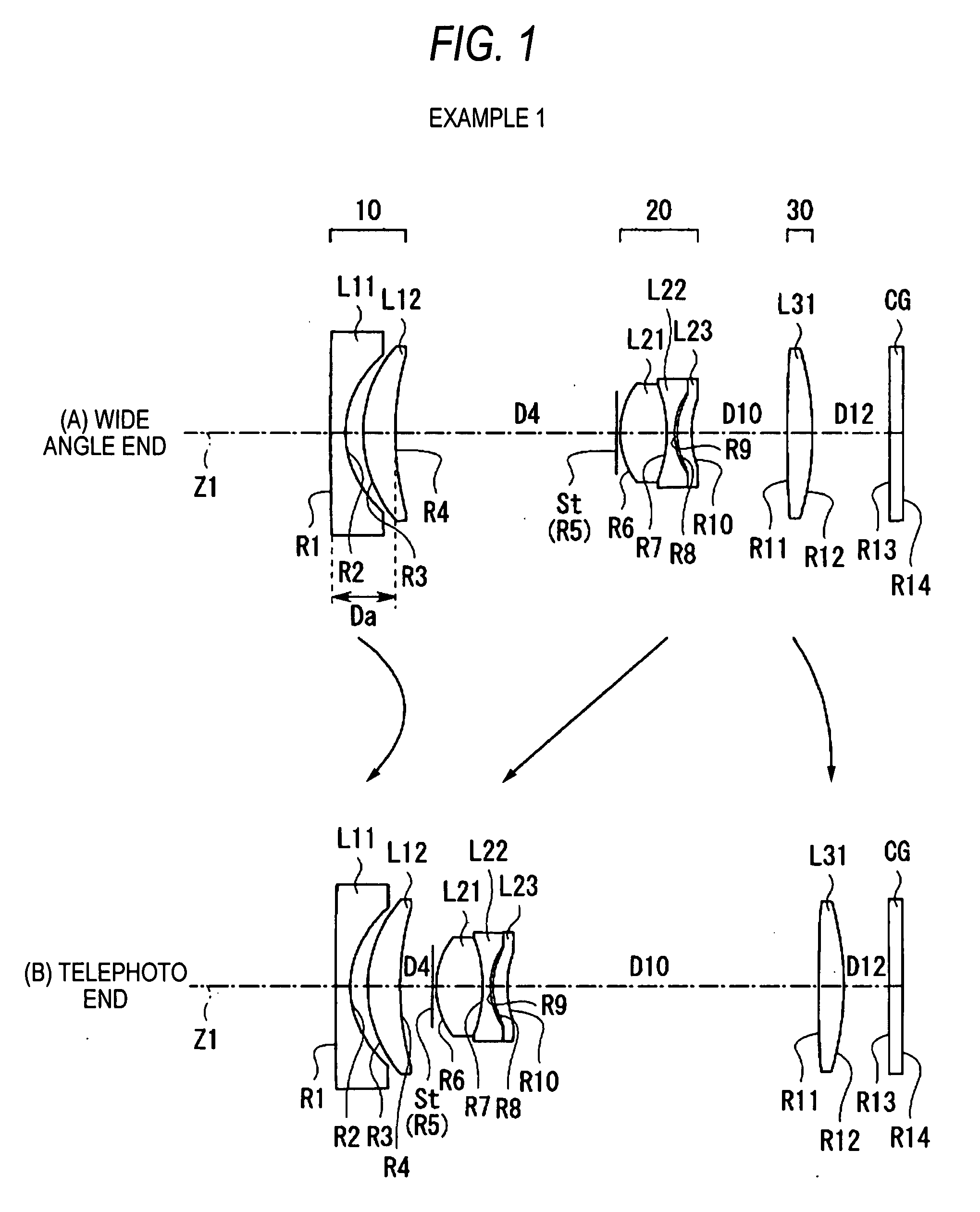Zoom lens and imaging apparatus
a zoom lens and imaging apparatus technology, applied in the field of small zoom lens and imaging apparatus, can solve the problems of insufficient miniaturization, inability to achieve high-quality images, and long overall length of the zoom lens, and achieve the effect of higher quality and quality
- Summary
- Abstract
- Description
- Claims
- Application Information
AI Technical Summary
Benefits of technology
Problems solved by technology
Method used
Image
Examples
examples
[0064]Next, specific numerical examples of the zoom lens according to the embodiment will be described below. In the description below, based on the first embodiment of the invention, first to fourth numerical examples will be described altogether.
[0065]FIGS. 5(A), 5(B) and 6 show specific lens data (Example 1) which corresponds to the configuration of the zoom lens shown in FIG. 1. In particular, lens data thereof is shown in FIG. 5(A), data related to zooming is shown in FIG. 5(B), and data related to aspherical surfaces is shown in FIG. 6.
[0066]Shown in a column of Si (surface number) in the lens data shown in FIG. 5(A) are numbers of i-th (i=1 to 14) surfaces which result when symbols are given to surfaces of constituent lenses of a zoom lens of this example in such a manner as to increase sequentially from an object side surface of a constituent lens situated on closest to as the first surface, toward an image side of the zoom lens. Shown in a column of Ri (radius of curvature)...
PUM
 Login to View More
Login to View More Abstract
Description
Claims
Application Information
 Login to View More
Login to View More - R&D
- Intellectual Property
- Life Sciences
- Materials
- Tech Scout
- Unparalleled Data Quality
- Higher Quality Content
- 60% Fewer Hallucinations
Browse by: Latest US Patents, China's latest patents, Technical Efficacy Thesaurus, Application Domain, Technology Topic, Popular Technical Reports.
© 2025 PatSnap. All rights reserved.Legal|Privacy policy|Modern Slavery Act Transparency Statement|Sitemap|About US| Contact US: help@patsnap.com



